
















is our number one priority. “Safety” stands as one of our Town’s three core values, and the safety and well-being of our residents, visitors, and employees is paramount to our organization. Our departments all work in tandem to provide services and infrastructure that keep our constituents as safe as possible on a daily basis.
While we are very proud of all that we have accomplished and maintained, there is always room for improvement.
One of the major places of concern, both in our Town and across the nation, is traffic safety. There are so many factors and circumstances at play, that meaningful change in this area can be a daunting task.
Despite the many challenges involved, we are fully invested in improving our roadways and implementing new traffic measures in order to achieve zero traffic fatalities in Easton.

While we are a historical town, founded in 1710, Easton is no stranger to pioneering new paths and techniques to achieve success. We are exploring creative and innovative ways that have proven successful in cities around the nation and the world.
The plan laid out in this book is indeed ambitious, but we can not achieve anything without striving first. We fully believe our dedicated and talented workforce, in partnership with key organizations and community members, is equipped to deliver on the promise of a future with zero traffic fatalities in our Town. Now, we can discuss how the rubber meets the road...
Mayor Megan Cook





This strategic plan is the result of a collaboration between the Town of Easton, consultants, community partners, and industry experts. Each section was crafted with input from professionals in traffic safety, engineering, law enforcement, and local government in alignment with the Maryland Highway Safety Office’s “Zero Deaths Maryland” initiative. Thank you to the following people and organizations for making this strategic plan possible.
AUTHOR
Ron Engle - Public Safety Consultant
Thomas Klein
Jessica Mumbulo
Megan Cook - Mayor of Easton
Alan Lowrey - Chief of Police
Rick VanEmburgh - Town Engineer
Kody Cario - Director of Engineering
Greg Mueller - PR/Communications Specialist
Heather Grant - Executive Director, Talbot Thrive
Sonny Jones - Chief, Easton Vol. Fire Deptartment
A special thanks to the RAVEN team from the GIS program at Washington College for their efforts in data research and compilation. They worked to build out the Easton Interactive Traffic Dashboard (EITD), which was instrumental in the creation of this plan. Thanks to the MDOT-MVA Highway Safety Office which funds RAVEN and ensures the continuance of their data flow.


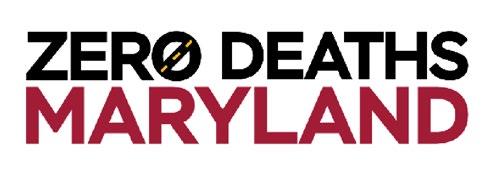















With this submission, the Town of Easton is presenting its Vision Zero Strategic Plan for the years 2025 through 2030. We are proud to join the other municipalities and jurisdictions in Maryland’s Toward Zero Deaths Campaign.
Founded in 1710, Easton, Maryland is nestled in the heart of Maryland’s Eastern Shore. Serving as the seat of Talbot County, Easton is a charming town that embodies both historical richness and modern vitality.
Easton is home to approximately 17,000 residents, making it a vibrant and welcoming community. The
population is comprised of a diverse mix of ages, backgrounds, and lifestyles, reflecting the town’s friendly and inclusive atmosphere. The demographic makeup includes a blend of families, retirees, and young professionals, all contributing to the town’s dynamic social fabric.
Easton spans an area of about 11.67 square miles. The town’s layout is a harmonious blend of residential
neighborhoods, commercial districts, and lush green spaces. Its geographical boundaries encompass a variety of landscapes, from historic downtown streets to tranquil suburban avenues and scenic rural outskirts.
The historic Easton downtown streets are often lined with flowers and seasonal decorations, adding to the town’s quaint charm. Easton is a cultural and commercial hub for the Eastern Shore and features beautifully preserved buildings, boutique shops, and art galleries. Its gourmet restaurants help to make Easton a very popular tourist destination.
Easton’s historic small-town charm has caught the attention of both regional and national press with notable publications such as Travel & Leisure, USA Today, and Southern Living boasting Easton as a top small town in the country.
The Town of Easton boasts 14 unique parks, each with their own features and identities, offering residents ample spaces for outdoor activities and recreation. Our parks boast a wide range of different amenities that benefit residents, including playgrounds, walking trails, sports facilities, kayak launches, skate parks, and more.
The Tred Avon River runs along the western border of town, providing a picturesque gateway from our shore to the Chesapeake Bay. Easton Point Park acts as our public access to this waterfront, offering gorgeous views and recreational opportunities such as kayaking, fishing, and riverside picnics. The Town has future plans for major development to bolster this area, giving more opportunity and usability for this great spot.
Easton is well-equipped with modern amenities and infrastructure, ensuring a high quality of life for its residents. The town has a robust healthcare system, including the University of Maryland Shore Medical Center at Easton, providing comprehensive medical services.
Educationally, Easton is served by several highly regarded public and private schools, offering quality education from elementary through high school, and an esteemed
community college just 13 miles from city center. The town also values lifelong learning, with institutions like the Academy Art Museum and Chesapeake Forum that offer a range of educational programs and Workshops for all ages.
Easton has an approximately 95-mile network of roadways. This extensive system of roads includes charming tree-lined streets and bustling thoroughfares, with quiet suburban neighborhoods along the outskirts.
The Town Government requires that roadways are well designed, constructed and maintained. This ensures smooth and safe transit for residents and visitors alike.
Route 50 is the Town’s major thoroughfare, bisecting Easton and leading to Ocean City, MD and other key destinations on the Eastern Shore and beyond.
Easton, Maryland, is a town that beautifully balances historical charm with modern living. Its welcoming community, rich cultural heritage, and well-maintained infrastructure make it an ideal place to live, work, and visit. Whether you’re strolling through its historic downtown, enjoying the natural beauty of its parks, or participating in its vibrant cultural events, Easton offers a unique and enriching experience for any who visit.
Because of our size, we do not have a large traffic fatality problem. Certainly not the magnitude needed to create traffic safety strategies. When we began exploring effective methods to improve traffic safety within our community, it became apparent that we needed to concentrate on injury crash experiences to design safety strategies.
Additionally, it became clear that traditional safety approaches may no longer be effective in combating modern traffic problems. This is how we began researching the Maryland Department of Transportation’s “Zero Deaths Maryland” Initiative.
Traffic safety became a national issue with the publication of Ralph Nader’s “Unsafe at any Speed.” Two years later the Highway Safety Act of 1966 was passed. The fear at that time was that national fatalities would soon exceed 60,000 per year.
The National Highway Safety Board (later to become the National Highway Traffic Safety Administration) was formed. A complex system of Federal Highway Safety grants was formed to assist the states reach certain levels of performance in 21 safety areas. The grants were distributed to each State. Each state selected a Governor’s Highway Safety Representative, who had the responsibility of administering these funds.
Overriding this concept are the targeted safety areas that were designed to reduce the number of crashes and, injuries and fatalities. These campaigns were for specific issues such as drunk driving, 55 National Maximum Speed Limit, seat belt use and distracted driving. These campaigns were usually targeted to change specific driving behaviors as opposed to systemic change. None of these campaigns had a goal of eliminating fatalities entirely.
These Campaigns rely heavily on public awareness campaigns and enforcement of traffic laws. This includes media campaigns, public service announcements, and increased police presence to enforce traffic laws.
The predominant belief was that approximately 90% of the crashes were due to human error, 8% to motor vehicle defects and the remaining due to highway construction shortcomings. By primarily placing the responsibility for safety on individual road users, the emphasis was to encourage drivers, pedestrians, and cyclists to follow traffic laws and adopt safer behaviors.
The Achilles Heel to these concepts was that if you concentrate most of your resources on one safety area, the other programs suffer for inadequate funding and human resource. While casualties are reduced in the concentrated areas, they increase in the areas with diminished resources.
These campaigns often focus on changing individual behaviors through education and enforcement, rather than making systemic changes to the transportation system. Most of these campaigns include a few elements of road design improvement but rarely prioritized comprehensive redesigns of road infrastructure as a primary strategy.
The ideology was to focus on reducing accidents and injuries through targeted behavioral changes, education, and enforcement, placing more responsibility on individual road users and less on systemic changes.
VISION ZERO adopts a comprehensive, systemic, and ethically driven approach aiming for zero fatalities, with shared responsibility and significant focus on infrastructure and data-driven strategies. In other words these solutions relate to or are concerned with wholes or complete systems rather than with the analysis of, treatment of, and/or dissection into parts. The whole is greater than the sum of its parts.
The mission of VISION ZERO is zero fatalities and serious injuries on the roads. The prevailing ideology is that no loss of life is acceptable. It employs a systematic approach to road safety. Strategies focus on all aspects of the transportation system including road design, vehicle technology, law enforcement, and public behavior. Human life and health are the driving forces in all aspects of planning and design. As opposed to earlier philosophies of traffic safety VISION ZERO takes the redesign of road infrastructure to make it safer its highest priority. This includes measures like traffic calming, protected bike lanes, safe pedestrian crossings, and lower speed limits in urban areas.
Traffic deaths are INEVITABLE
PERFECT human behaviour
Prevent COLLISIONS
INDIVIDUAL responsibility
Saving lives is EXPENSIVE
GIS based data systems provide extremely comprehensive crash history in amazing detail never before available to traffic safety planners and officials. This data frequently shows that crash experience may be much more dependent on adequate road design, construction and signage. In fact, extreme crash experiences at many troubled intersections may be the result of poor implementation and not correctable by law enforcement.
Under this philosophy road safety should be a shared responsibility among all stakeholders, including government agencies, planners, engineers, policymakers, law enforcement agencies, and road users.
VISION ZERO is based on an ethical premise that human life and health are paramount, and the system should be designed to accommodate human error without leading to serious consequences. It employs a comprehensive, systemic, and ethically driven approach aiming for zero fatalities, with shared responsibility and significant focus on infrastructure and data-driven strategies. The below chart expresses this concept in simpler terms.
VISION ZERO
Traffic deaths are PREVENTABLE
Plan for HUMAN FAILURE
Prevent FATAL AND SEVERE CRASHES
SYSTEMS approach
Saving lives is NOT EXPENSIVE

We have selected VISION ZERO as The Most Effective Strategy for Reducing Traffic Crashes in Easton, Maryland
VISION ZERO is based on an ethical premise that human life and health are paramount, and the system should be designed to accommodate human error without leading to serious consequences. It employs a comprehensive, systemic, and ethically driven approach aiming for zero fatalities, with shared responsibility and significant focus on infrastructure and data-driven strategies. Because of these approaches, we have decided to create a VISION ZERO Strategic Plan for Easton.
VISION ZERO is a global movement aimed at eliminating all traffic fatalities and severe injuries while increasing safe, healthy, and equitable mobility for all. VISION ZERO was conceived and implemented in Sweden in 1997. It has been adopted by various cities worldwide. More than forty jurisdictions have implemented VISION ZERO, including very large cities like
New York, San Francisco, and Los Angeles in the United States.
This VISION ZERO philosophy recognizes that traffic deaths and severe injuries are preventable and proposes a multi-disciplinary approach to road safety that involves various stakeholders within a community. These stakeholders include government agencies, urban planners, traffic engineers, law enforcement, public health professionals, and the general public. Implementing VISION ZERO within Easton will require a concerted effort across these multiple sectors and a commitment to prioritizing safety above all else.
The above chart depicts the many cities and municipalities within the United States who are currently conducting a VISION ZERO Program.













There are four Core Principles of VISION ZERO program:
• SAFETY AS A PARAMOUNT ISSUE:
VISION ZERO is grounded in the belief that no loss of life is acceptable. Safety is prioritized over speed and efficiency in traffic planning and policy.
• HUMAN ERROR ACKNOWLEDGMENT:
Humans will make mistakes, so the system is designed to ensure that these mistakes do not result in fatal or severe injuries.
• SYSTEMIC APPROACH:
VISION ZERO employs an across the board, comprehensive approach, which integrates the efforts by the involved sectors to create safer road environments.
• EQUITY IN MOBILITY:
Ensuring that all citizens, regardless of socioeconomic status, have access to safe and reliable transportation options.
Stakeholder Engagement: Assemble a diverse group of stakeholders, including representatives from local government, transportation departments, public health officials, community organizations, and residents. This task force will lead the VISION ZERO initiative and ensure that all voices are heard.
Key Stakeholders:
• Local government officials and policymakers
• Urban planners and transportation engineers
• Public health experts
• Law enforcement agencies
• School representatives and parentteacher associations
• Community leaders and local businesses
• Advocacy groups for pedestrians, cyclists, and public transportationusers
Goal Setting: Define clear, achievable goals for reducing traffic fatalities and severe injuries, with a timeline for achieving these objectives. Specific goals might include:
• Reducing traffic fatalities by 50% within five years
• Eliminating all pedestrian and cyclist fatalities within ten years
• Achieving zero traffic fatalities within fifteen years
Crash Data Analysis: Collect and analyze data on traffic crashes, identifying high-risk areas, common causes of accidents, and vulnerable populations. This data will inform targeted interventions.
DATA SOURCES:
• Police and accident reports
• Hospital and emergency room records
• Insurance claims
• Community surveys and feedback
ANALYSIS TECHNIQUES:
• Geographic Information Systems (GIS) for mapping crash hotspots
• Statistical analysis to identify trends and patterns
• Machine learning algorithms to predict high-risk behaviors and locations
Gather input from residents about their experiences and concerns regarding traffic safety. Community feedback is essential for identifying problem areas that data alone might not reveal. Methods for gathering input:
• Town hall meetings and public forums
• Online surveys and social media platforms
• Focus groups with specific demographics, such as elderly residents, parents, and young drivers
• Collaboration with local media to raise awareness and gather feedback
Safe Routes to Schools: Develop and enhance safe walking and biking routes for children traveling to and from school, ensuring that these routes are well-lit, clearly marked, and regularly maintained. Initiatives include:
• Implementing “walking school buses” where groups of children walk to school together with adult supervision
• Partnering with schools to provide bike safety education and helmet giveaways
• Conducting regular assessments of routes to identify and address hazards
Road Design Improvements: Implement traffic calming measures such as roundabouts, protected bike lanes, pedestrian islands, and improved crosswalks. These designs reduce the likelihood of collisions and mitigate the severity of accidents when they occur. Specific interventions may include:
• Narrowing lanes to reduce vehicle speeds
• Installing pedestrian countdown signals at crosswalks
• Creating raised intersections and crosswalks to slow down vehicles
• Designing “complete streets” that accommodate all users, including pedestrians, cyclists, and transit rider
Strategic Enforcement: Focus law enforcement efforts on behaviors that contribute most to severe crashes, such as speeding, distracted driving, and impaired driving. Use data to guide the deployment of resources to high-risk areas. Tactics include:
• Deploying more officers to patrol known high-risk areas during peak times
• Conducting regular DUI checkpoints and speed enforcement campaigns
• Utilizing data-driven approaches to identify and address patterns of dangerous behavior
Automated Enforcement: Consider the use of automated enforcement technologies, such as redlight cameras and speed cameras (where applicable), to deter dangerous driving behaviors. Implementation considerations:
• Ensuring that automated enforcement is used transparently and fairly
• Engaging with the community to build support and understanding for these measures
• Regularly evaluating the effectiveness of automated enforcement in reducing crashes
Awareness Campaigns: Launch public education campaigns to raise awareness about traffic safety issues and promote safe driving, walking, and biking behaviors. Use a variety of media, including social media, local newspapers, and community events. Campaign focus areas:
• The dangers of distracted and impaired driving
• The importance of obeying speed limits and traffic signals
• Safe practices for pedestrians and cyclists
• The benefits of using public transportation
School Programs: Incorporate traffic safety education into school curricula, teaching children about pedestrian and bicycle safety from a young age. Educational activities:
• Interactive lessons and games about road safety
• Bike rodeos and safety workshops
• Collaborating with local police and fire departments for safety demonstrations
Monitoring Progress: Regularly review traffic crash data and progress toward VISION ZERO goals. Adjust strategies as needed based on what is working and what is not. Key metrics:
• Number of traffic fatalities and severe injuries
• Trends in specific types of crashes (e.g., pedestrian, cyclist, motor vehicle)
• Community perceptions of safety
• Compliance rates with traffic laws and safety measures
Community Feedback: Maintain open lines of communication with the community, soliciting feedback and keeping residents informed about VISION ZERO initiatives and progress. Engagement strategies:
• Regularly updating the community through newsletters, social media, and public meetings
• Creating an online portal for residents to report safety concerns and suggest improvements
• Establishing a VISION ZERO advisory board with community representatives
Funding and Resources: Securing adequate funding and resources to implement VISION ZERO strategies can be challenging for many municipalities. Potential solutions include:
• Applying for grants and funding from federal and state governments
• Partnering with private sector organizations and local businesses for sponsorships and donations
• Allocating a portion of traffic fines and fees towards VISION ZERO initiatives
Inter-agency Coordination: Effective implementation requires collaboration among various government agencies and stakeholders, which can be difficult to achieve. Strategies for improving coordination include:
• Establishing regular inter-agency meetings and communication channels
• Creating joint task forces or working groups focused on specific aspects of VISION ZERO
• Developing clear roles and responsibilities for each agency involved
Public Buy-In: Gaining public support for VISION ZERO initiatives, especially those that may be perceived as restrictive or inconvenient, is crucial for success. Methods to build support include:
• Engaging with community leaders and influencers to advocate for VISION ZERO
• Highlighting the personal stories of individuals affected by traffic crashes to humanize the issue
• Demonstrating the benefits of VISION ZERO through pilot projects and success stories
Data Collection and Analysis: Accurate data collection and thorough analysis are essential for identifying problem areas and measuring the effectiveness of interventions. Addressing this challenge involves:
• Investing in technology and tools for better data collection and analysis
• Training staff on best practices for data management and interpretation
• Collaborating with academic institutions and research organizations for expertise and support














From the experience gained from the early VISION ZERO sites around the country, a great deal has been learned about what makes an effective program. Prospective VISION ZERO sites should be cognizant of the nine components and understand that they are critical for program success. These commitments should be undertaken with the understanding that some strategies may have a long lead time for completion and others will be ongoing. Continual maintenance and upgrade of existing roadways is one such ongoing strategy.
The highest-ranking local officials (Mayor, Town Council, Town Manager) make an official and public commitment to a Vision Zero goal to achieve zero traffic fatalities and severe injuries among all road users (including people walking, biking, using transit, and driving) within a set time frame. This should include passage of a local policy laying out goals, timeline, stakeholders, and a commitment to community engagement, transparency, & equitable outcomes.
An official town Vision Zero Taskforce (or Leadership Committee) is created and charged with leading the planning effort for Vision Zero. The Taskforce should include, at a minimum, high-ranking representatives from the Office of the Mayor, Police, Transportation (or equivalent) and Public Health. Other departments to involve include Planning, Fire, Emergency Services, Public Works, District Attorney, Office of Senior Services, Disability, and the School District.

Vision Zero Action Plan (or Strategy) is created within 1 year of initial commitment and is implemented with clear strategies, owners of each strategy, interim targets, timelines, & performance measures.
Town stakeholders commit to both an equitable approach to Vision Zero by establishing inclusive and representative processes, as well as equitable outcomes by ensuring measurable benchmarks to provide safe transportation options for all road users in all parts of the town.
Town leaders commit to and prioritize a systemsbased approach to Vision Zero — focusing on the built environment, systems, and policies that influence behavior — as well as adopting messaging that emphasizes that these traffic losses are preventable.
A commitment is made to encourage meaningful cooperation among relevant government agencies & community stakeholders to establish a framework for multiple stakeholders to set shared goals and focus on coordination and accountability.
Town stakeholders commit to gather, analyze, utilize, and share reliable data to understand traffic safety issues and prioritize resources based on evidence of the greatest needs and impact
Opportunities are created to invite meaningful community engagement, such as select community representation on the Taskforce, broader community input through public meetings or workshops, online surveys, and other feedback opportunities.
The town’s process is transparent to town stakeholders and the community, including regular updates on the progress on the Action Plan and performance measures, and a yearly report (at minimum) to the local governing board (e.g. Town Council).
VISION ZERO is a revolutionary strategy aimed at eliminating all traffic fatalities and severe injuries while ensuring safe, healthy, and equitable mobility for all. Originating in Sweden in the 1990s, VISION ZERO has since become a global movement, reshaping urban landscapes and transportation policies worldwide. By prioritizing human life over speed and convenience, VISION ZERO presents a bold rethinking of Easton’s approach to road safety.
As we move forward, there are a number of organizations and municipal departments that are critical for the development and implementation of this plan. These include:
1. TOWN GOVERNMENT: VISION ZERO can significantly benefit Town planners and the Town government by providing a framework for safer and more sustainable urban environments. They are driven by the need to reduce traffic fatalities and enhance the quality of life for residents.
2. TRANSPORTATION AGENCIES:
Departments responsible for the Town’s transportation system will find VISION ZERO valuable for developing safer routes and systems, reducing crashes and promoting alternative transportation systems.
3. PLANNERS AND ARCHITECTS:
Professionals in urban planning and zoning can leverage VISION ZERO principles to design systems that prioritize safety and accessibility, influencing future development projects.
4. COMMUNITY ADVOCACY
GROUPS: Organizations advocating for pedestrian, cyclist, and community safety can use VISION ZERO to further their mission, gaining tools and support for effective campaigning.
5. GENERAL PUBLIC: Citizens stand to benefit from safer streets and more livable communities. Engaging the public is crucial for grassroots support and behavioral change.
We have taken the “Four E’s” approach to creating our Strategic Highway Safety Plan. Shown in the graphic opposite this page, the Four E’s are Enforcement, Engineering, Education and Emergency Medical Services (EMS).
This graphic highlights Maryland’s Strategic Approach to Reduce Fatalities and Serious Injuries and it serves as a foundation for the approach we have taken with our plan.

The development of this plan is just the beginning. This plan will serve as the keystone for action, teamwork and progress towards a safer Town of Easton. It will keep safety on the front burner as we move forward to achieve our safety goals.
Progress on these goals will be measured to gauge our effectiveness in reducing serious and fatal crashes. The “Easton Interactive Traffic Dashboard” (EITD), a GIS based web interface that allows for easy traffic data summaries, will be critical in this process and will allow for improved or new strategies.
Annual progress reports will provide the foundation for continued discussion, impetus for improvement and the development of ideas for additional strategies.

LEAD AGENCY ACRONYMS:
MA - Easton Mayor
TG - Town Government
EPD - Easton Police Department
ENG - Easton Engineering Department
EVFD - Easton Volunteer Fire Department
CA- Community Advisory Committee
CP - Community Partners
TC - Talbot County
SHA - State Highway Administration
PI - Easton Public Information Officer
CIT - Active Crash Investigation Team
DCT - Delmarva Community Transport
EITD - Easton Interactive Traffic Dashboard
KEY METRICS:
• Decrease in the number of fatal crashes and injuries
• Decrease in the rate and amount of total collisions
• Decrease in the rate and amount of pedestrian collisions (involving people walking, rolling and biking)
THE NEXT SECTION OF THIS PLAN WILL BE:
• In depth look at Easton’s overall crash analysis
• Ten highest crash locations
• Strategies by the 8 categories
• Description of category
• Crash history of category
• Strategies specific to category
4092 mi
Since the introduction of VISION ZERO , Sweden has seen a significant reduction in traffic fatalities, with rates among the lowest in the world. Key strategies included:
• Redesigning roads to prioritize safety, such as implementing 2+1 roads with a central barrier to prevent head-on collisions
• Lowering speed limits in urban areas and around schools
• Enhancing public transportation options to reduce the number of vehicles on the road
199 mi
Implementation of VISION ZERO strategies has led to a decrease in traffic deaths, including pedestrian fatalities, since its adoption in 2014. Notable initiatives involved:
• Expanding the network of protected bike lanes and pedestrian plazas
• Launching targeted enforcement campaigns against speeding and failure to yield to pedestrians
• Introducing the “Dusk and Darkness” campaign to address increased risks during shorter daylight hours
3846 mi
In 2019, Oslo reported zero pedestrian and cyclist fatalities, demonstrating the potential success of comprehensive VISION ZERO efforts. Key actions included:
• Significantly reducing speed limits in the city center
• Implementing car-free zones















With the Easton Interactive Traffic Data (EITD) interface active, our Town has a new and incredibly useful tool to help prepare and visualize traffic data like never before. Utilizing this new platform, we have been able to pinpoint problematic areas around town as well as gather data on likely causes for accidents that we can work towards correcting. Unbiased and clear, this data is invaluable to our efforts in reaching VISION ZERO and should guide any decisions made to improve road safety in our Town. The following strategies define the course for implementing and achieving safety on our streets. They are critical in achieving the VISION ZERO goal of zero fatalities by 2030 and a fifty percent reduction in injury crashes by 2035.














Idlewild Avenue | 76 Crashes

Airport Road | 64 Crashes














VISION ZERO is a comprehensive approach to road safety. The fundamental premise of VISION ZERO is that no loss of life or serious injury on the roads is acceptable. Rather than viewing traffic deaths and serious injuries as inevitable, VISION ZERO proposes that these incidents are preventable through a combination of thoughtful urban planning, infrastructure design, and behavior change.
Ethical Imperative:
At the heart of VISION ZERO is the standpoint that human life and health are paramount. This approach position is that it is not ethical to design a road system where deaths and serious injuries are a predictable outcome.
Human Fallibility:
VISION ZERO acknowledges that people will make mistakes. Instead of expecting perfect human behavior, the initiative focuses on designing systems that mitigate the consequences of these inevitable errors. These systems includes reduce the likelihood of severe injuries or fatalities.
Shared Responsibility:
VISION ZERO emphasizes that responsibility for road safety is shared between system designers (e.g., policymakers, urban planners, engineers) and road users. However, the onus is particularly on those who design and regulate the transportation system to ensure that it is safe. This is the opposite philosophy for safety which directed the vast majority of its resources toward driver actions.
Systematic Approach:
The approach integrates safety into all aspects of road design and traffic management. This includes speed limits that are appropriate to the safety of the road, safer street designs, and the use of technology to enhance safety. VISION ZERO policies often involve lowering speed limits, redesigning streets to calm traffic, and enhancing pedestrian and cyclist protections.
Data-Driven Decisions:
VISION ZERO relies heavily on data to understand where and why traffic injuries and fatalities occur. Data is used to identify high-risk locations and behaviors, which then guides the allocation of resources and the design of interventions.
Implementation Strategies:
• Safe Streets: Redesigning streets to prioritize safety over speed. This includes creating protected bike lanes, safer pedestrian crossings, and implementing traffic calming measures like roundabouts, raised crosswalks, and narrower lanes.
• Safe Speeds: Establishing speed limits that are aligned with the safety of the road environment. Lower speeds are promoted, particularly in urban areas, to reduce the likelihood and severity of crashes.
• Safe Road Users: Educating the public on safe behaviors, enforcing traffic laws, and designing systems that discourage risky behaviors like speeding, distracted driving, and driving under the influence.
• Post-Crash Response: Ensuring rapid and effective emergency response to crashes to minimize the consequences of any injuries.
In summary, VISION ZERO represents a paradigm shift in road safety, moving away from the acceptance of traffic fatalities as a cost of mobility and towards a system where every life is valued and protected through proactive, data-driven strategies.
The ultimate goal of VISION ZERO is to eliminate all traffic fatalities and severe injuries. While this is an ambitious goal, those cities and countries that have adopted VISION ZERO have seen significant reductions in road deaths and serious injuries. The approach has been implemented in various forms around the world, often leading to significant changes in how streets are designed and how traffic laws are enforced.




ACTION (O-1): Consult with SHA to garner advice of a Traffic Engineer.
REASON: Success of VISION ZERO will require technical traffic engineering services. This is a skill set that the Town does not currently have.
LEADS: ENG, SHA
DEADLINE: 2026
ACTION (O-2): Create a Crash Investigation Team to periodically conduct multi-disciplinary safety audits of high crash or serious crash locations to determine whether engineering or enforcement corrective measures are required to prevent future occurrences.
REASON: Traffic safety audits are to be conducted by a mixed group of professionals including safety engineers, police, fire department, state highway administration and emergency medical services. They may be able to identify previously unidentified factors leading to these collisions.
LEADS: PD, EVFD, SHA, EMS, ENG
DEADLINE: 2025 - Ongoing
ACTION (O-3): Create a new volunteer position of VISION ZERO Coordinator
REASON: Town does not currently have a VISION ZERO coordinator to oversee VISION ZERO strategies. This removes the coordination responsibilities, bureaucratic burden, policy writing, and program status reporting from hands of dedicated staff from participating departments.
LEADS: MA, TG
DEADLINE: 2025
ACTION (O-4): Create a VISION ZERO web page as part of Town’s website. This will be coupled with Town’s Dashboard that should allow public participation and reporting.
REASON: Transparency is vial to VISION ZERO and the web page will allow citizen participation
and contributions of data. Will also give residents an idea of how schedules are progressing.
LEADS: TG
DEADLINE: 2025 - Ongoing
ACTION (O-5): Crash Investigation Team to conduct study of each of high crash corridors and identify what the root causes are.
REASON: Once root causes are identified, the Town can focus limited resources on the most at-risk corridors first, and prioritize each location each site by its ability to reduce crash occurrences and severity the most cost effective way to reach VISION ZERO goals
LEADS: PD, FD, SHA, EMS, ENG
DEADLINE: 2025 - Ongoing
ACTION (O-6): Crash Investigation Team
Modification to High Injury Locations
REASON: Focusing Towns limited resources at high crash locations. These are locations where improvement will lead to most significant reduction of crash occurrence and casualties in the shortest period to time. This is important because crashes often are located at or near intersections. The top five intersections would require immediate attention. These are Route 50/Airport Rd./Blackdog Alley, Route 50/Route 322 Northbound Merge, Route 50/Chapel Rd., N. Washington St./ Glebe Rd., and Washington Street/Aurora Street.
LEADS: PD, FD, SHA, EMS,ENG
DEADLINE: 2025 - Ongoing
ACTION (O-7): Host Transit Expansion Study
REASON: Convene study group to explore expansion of community transit program to create an established transportation system within the Town to assist those without transportation and assist reducing the number of vehicles on Town streets
LEADS: MA, TC, SHA
DEADLINE: 2027
ACTION (O-8): Update guidelines for new street design
REASON: Review the Complete Street Design Guidelines to ensure that our standards are at least comparable to national guidelines. Ensure that all future street design and development meets or exceeds these standards.
LEADS: ENG
DEADLINE: Ongoing
ACTION (O-9): Review possible installation of roundabouts at dangerous intersections
REASON: Use crash investigation team and traffic engineers to determine if any of the dangerous intersection within the town can be improved by creating roundabouts. Install where they can create substantial safety improvement.
LEADS: ENG
DEADLINE: 2026
ACTION (O-10): Conduct annual inventory and inspection of all intersections for maintenance and renewal
REASON: Conduct inventory of all Town streets to determine those which need new or improved signage and/or striping to improve visibility and safety for motorists. Ensure they meet high standards of retro reflectivity
LEADS: ENG
DEADLINE: Ongoing
ACTION (O-11): Create network of synchronized traffic signals to improve safety and traffic flow
REASON: Existing system is not coordinated causing needless delays in travel through Town. Ensure replacement of signals that do not confirm with this system and do not have latest technology for visibility.
LEADS: ENG
DEADLINE: 2026 - Ongoing
ACTION (O-12): Surface Maintenance Program
REASON: Upgrade current program for street maintenance to ensure that street surfaces are adequately sealed for cracks and have proper surfaces for inclement weather conditions. This prolongs the life expectancy of roadways and reduces maintenance budget over time.
LEADS: ENG
DEADLINE: Ongoing
ACTION (O-13): Create Traffic Safety Education Program
REASON: The Town does not have a method with which to inform citizens about important safety issues and events. It is essential to publicize the effective safety and VISION ZERO materials in which we are participating. Citizens need to be aware of these issues, since many have impact on their safety. Easton must utilize internal and external media avenues in order to have our information reach the widest possible relevant audience.
LEADS: MA, PI
DEADLINE: 2026 - Ongoing
ACTION (O-14): Create VISION ZERO Web page and GIS Application
REASON: Dissemination of information is critical to further the VISION ZERO program. Easton is first municipality to publish a GIS Dashboard. This dashboard is the keystone of the development of this strategic plan. Town should create a VISION ZERO website to inform citizens of news and progress of VISION ZERO. This web page should allow citizen reporting of issues.
LEADS: PI, EPD
DEADLINE: 2025 - Ongoing
ACTION (O-15): Create Community Advisory Committee
REASON: This initial strategic plan was created primarily with counsel from major participating organizations and departments. All subsequent changes and/or plans will be coordinated with a Community advisory Committee. They will ensure that the citizens of Easton will have always have a voice that will be heard in matters of traffic safety within the community.
LEADS: MA, PI
DEADLINE: 2025 - Ongoing

Speeding is one of the biggest factors in traffic crashes, regardless of situation and road type. Speed limits are established based on factors such as road conditions, traffic density, and safety considerations. Exceeding these limits is considered a traffic violation and poses significant risks to both the driver and others on the road.
Implications of Speeding:
• Increased likelihood of crashes, severe injuries, and fatalities.
• Impact of speed.
• Legal consequences such as fines, points on the driver’s license, and potential imprisonment for excessive speeding.
• Economic Impact such as higher insurance premiums, potential loss of employment (for professional drivers), and repair costs from accidents.
1. Automated Speed Enforcement Systems:
• Speed Cameras: Installed at strategic locations to capture images of speeding vehicles. These systems can operate 24/7 and provide unbiased enforcement.
• Radar and Lidar Devices: Used by traffic police to measure vehicle speeds accurately. Handheld or mounted on patrol cars, these devices help in identifying speed violations on the spot.
2. Increased Police Presence:
• Patrols in High-Risk Areas: Deploying more traffic officers in areas known for frequent speeding can deter drivers from violating speed limits.
• Unmarked Vehicles: Using unmarked police cars can catch speeders who might otherwise slow down when they see a marked patrol car.
3. Public Awareness Campaigns:
• Education Programs: Informing drivers about the dangers of speeding through workshops, seminars, and driving schools.
• Media Campaigns: Utilizing TV, radio, and social media to highlight the consequences of speeding and promote safe driving behaviors.
4. Engineering Solutions:
• Traffic Calming Measures: Road markings and signage, roundabouts, and narrowing lanes to physically slow down traffic.
• Smart Traffic Signals: Implementing adaptive signal control technology that adjusts signal timings based on real-time traffic conditions to manage speed effectively.
5. Community Involvement:
• Collaboration with Local Organizations: Partnering with schools, businesses, and community groups to raise awareness and promote adherence to speed limits.
Effective enforcement of speeding violations requires a multifaceted approach, combining technology, increased police presence, public education, engineering solutions, community involvement, and stringent legal measures. By implementing these strategies, authorities can enhance road safety, reduce accidents, and encourage responsible driving behavior.
13% result in fatality or serious injury
40% result in fatality or serious injury
73% result in fatality or serious injury
Source: Impact Speed and a Pedestrian’s Risk of Severe Injury or Death, AAA Foundation for Traffic Safety, September 2011

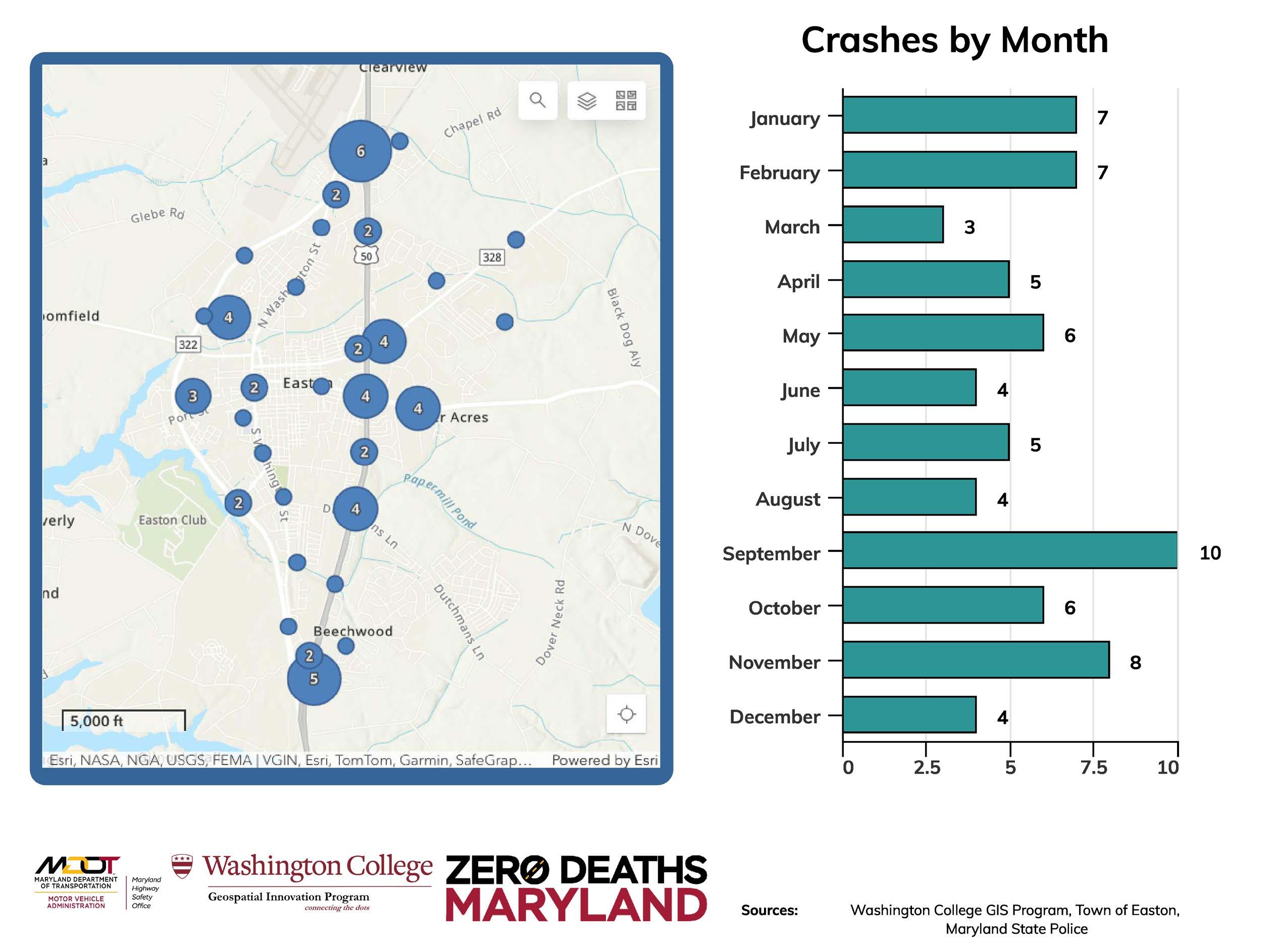
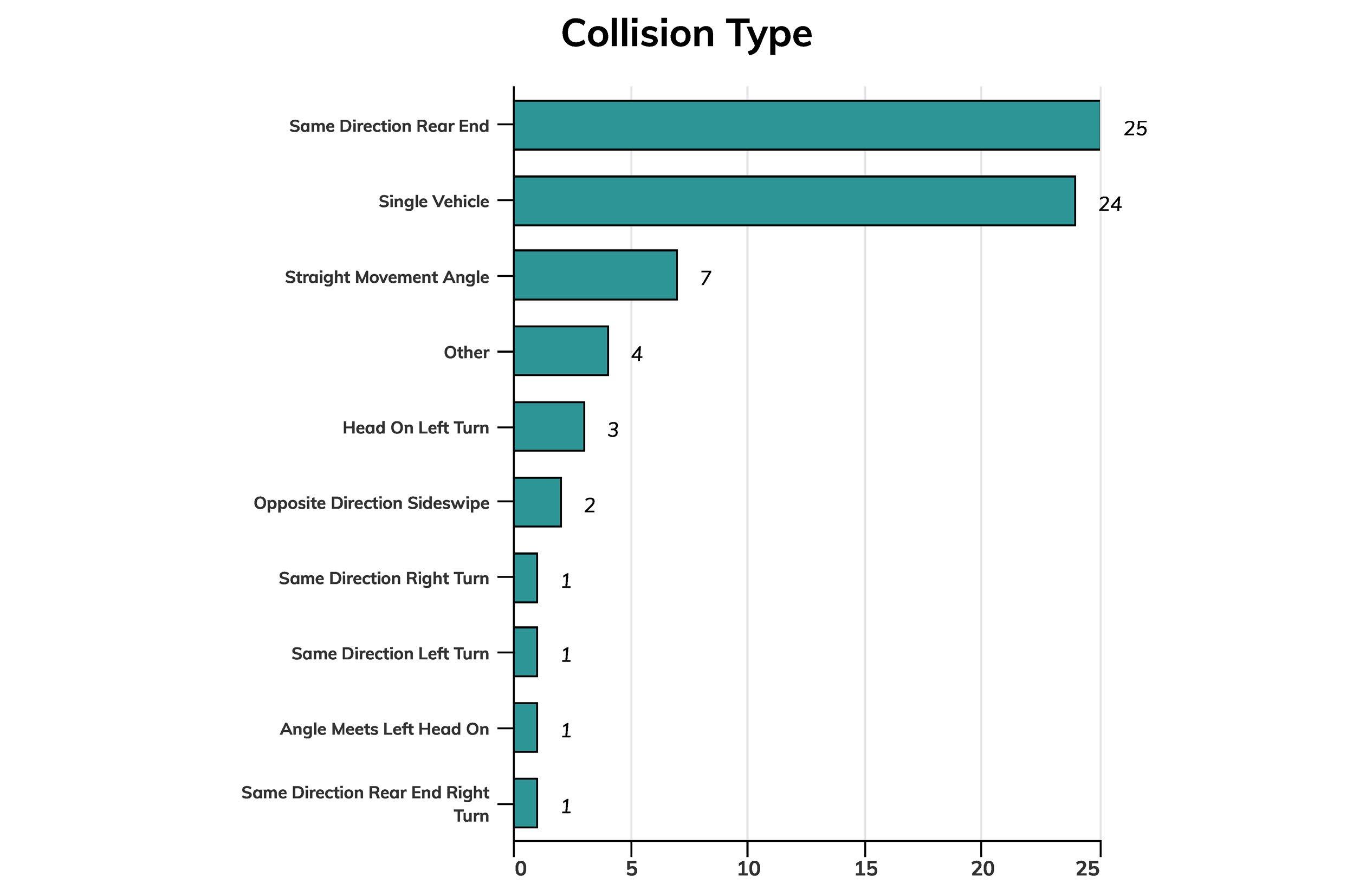
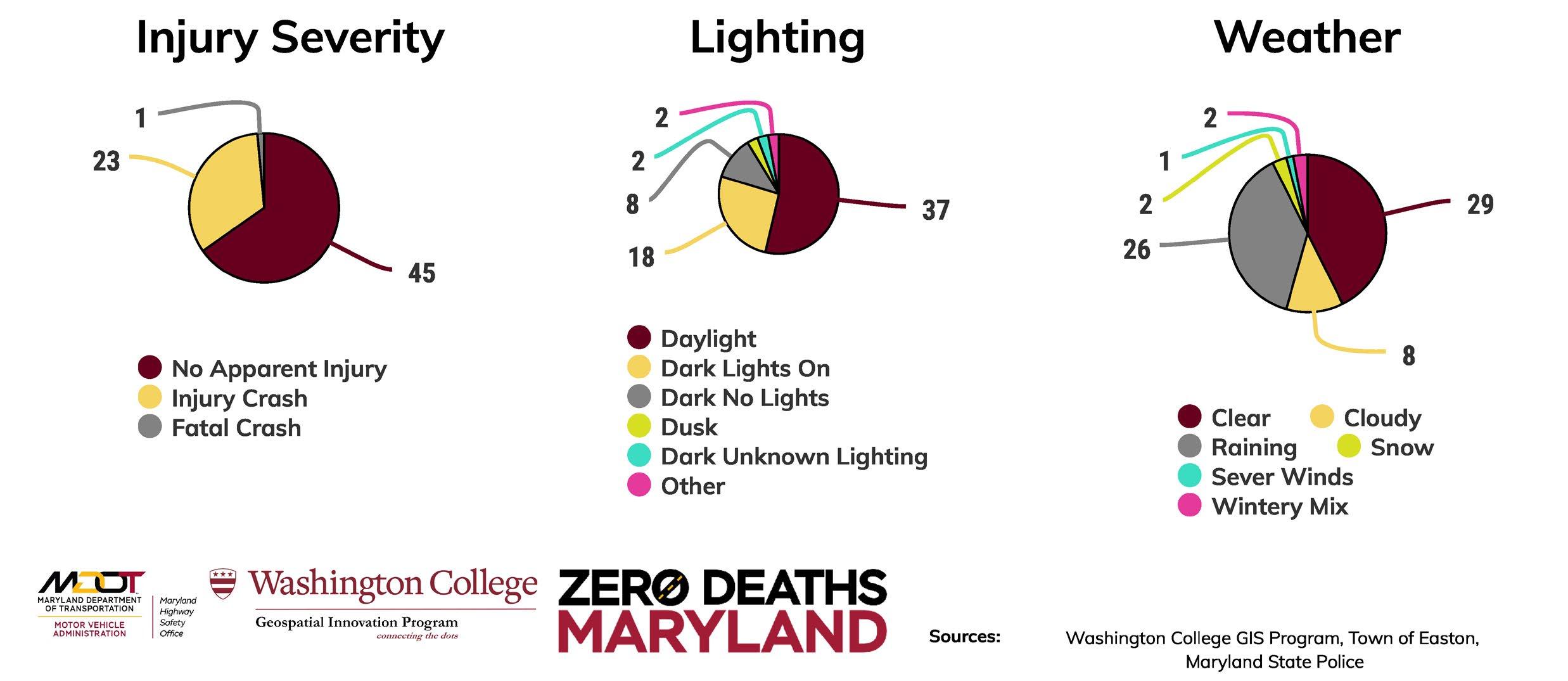
ACTION (S-1): Create a holistic approach to implementing speed limits
REASON: Engineering should partner with the PD and a crash investigation team to conduct a study of speed limits within the Town. California’s Department of Transportation uses a Safe System approach, based on recommendations from the Zero Fatalities Task Force. Their agency is exploring Safe System strategies for potential adoption. One such strategy is setting speed limits based on multi-modal, land use crash history, pedestrian and bicycle activity context rather than the 85th percentile of current motorist speeds. This is called context based speed limit analysis.
LEADS: EPD, ENG, CIT
DEADLINE: 2025 - Ongoing
ACTION (S-2): Expansion of speed camera program
REASON: Speed cameras have shown to be effective in deterring speeding. Current state law allows placement of speed cameras only in the proximity of schools. The additions of these automated camera will provide a deterrent to speeding along key corridors where speed is the primary crash factor. State law needs to be amended to allow for the use of these cameras.
LEADS: EPD, ENG
DEADLINE: 2027
ACTION (S-3): Educate public on dangers of speeding
REASON: Portable radar based flashing speed signs are highly effective in warning the public of the problem of speeding in the community. Typically used in areas where numerous speed complaints have been lodged. Neighborhood and residential streets are frequented by nonmotorized vehicles and vehicles are vulnerable road users.
LEADS: EPD, ENG
DEADLINE: 2027 - Ongoing
ACTION (S-4): Speed enforcement strategies
REASON: The Easton GIS Dashboard provides Police Administrators with the capability to identify patterns of speed related crashes. This allows more informed decsions by advising Patrols of the locations and time of
day when speed is most likely to be the cause of crashes.
LEADS: EPD
DEADLINE: 2026
ACTION (S-5): Dedicated patrols & existing patrols
REASON: Using the identification capability from the dashboard police administrators can identify locations and times of offenses in such a manner as to assign officers at those times and locations to reduce the incidence of those speed related offenses. This precision should allow officers to conduct their routine patrols while addressing crash problems.
LEADS: EPD
DEADLINE: 2025 - Ongoing
ACTION (S-6): Overtime patrols
REASON: If highway safety grant funds become available, the EPD can utilize them to supplement patrols at problem locations with overtime personnel.
LEADS: EPD
DEADLINE: 2026 - Ongoing
ACTION (S-7): Installation of Slow Zones
REASON: ENG in concert with EPD can utilize the GIS Dashboard to identify locations in the Town where vulnerable users are prevalent. These users include disabled, children, and people walking or cycling. Slow Zones take into account these vulnerable user areas and impose lower speed limits in areas such as schools, and parks.
LEADS: ENG, EPD
DEADLINE: 2026
ACTION (S-8): Intersections, crosswalks and Rails to Trails safety
REASON: Intersections, crosswalks and Rails to Trails Safety create locations where larger numbers of vulnerable users will be exposed and police presence can serve as a deterrent to speeders and violators of crossings. Patrol officers can be informed at roll call of these locations in their patrol area to devote special attention to them.
LEADS: EPD
DEADLINE: 2026

Distracted driving is the act of operating a motor vehicle while engaging in activities that divert the driver’s attention away from the primary task of driving. These distractions can compromise the safety of the driver, passengers, and others on the road.
There are three major types of distractions:
VISUAL: Taking your eyes off the road which may include using in-car technologies and navigation systems and texting or talking on a hand-held device.
MANUAL: Taking your hands off the wheel to eat, drink, adjust the radio, and/or grooming (e.g., applying makeup, combing hair).
COGNITIVE: Taking your mind off driving such as daydreaming or interacting with passengers or pets.
Drivers should multitask outside the car. Everyone spends a lot of time in their vehicles, and it may seem like the perfect time to get little things done, calling friends, searching for good music, maybe even text messaging. Don’t do it.
Drivers should focus on the road and the drivers around
them. All the standard adjustments need to be completed before starting to drive.
According to the National Highway Traffic Safety Administration (NHTSA), distracted driving is a leading cause of motor vehicle crashes. In Easton, from 2018 through 2023, almost 60% of traffic crashes list distracted driving as the causal factors. Five these crashes involved fatal injury, which is half of all fatal crashes for that period.
Distracted driving significantly increases the risk of accidents and fatalities. Distracted driving is a critical road safety issue that requires a multifaceted approach to address effectively. By combining legislative action, high-visibility enforcement, technological innovations, and educational initiatives, communities can significantly reduce the incidence of distracted driving and enhance overall road safety.
The following is the Easton Interactive Traffic Dashboard (EITD) section on Distracted Driving, along with strategies the Town of Easton is proposing to address Distracted Driving as a major causal factor for traffic crashes.



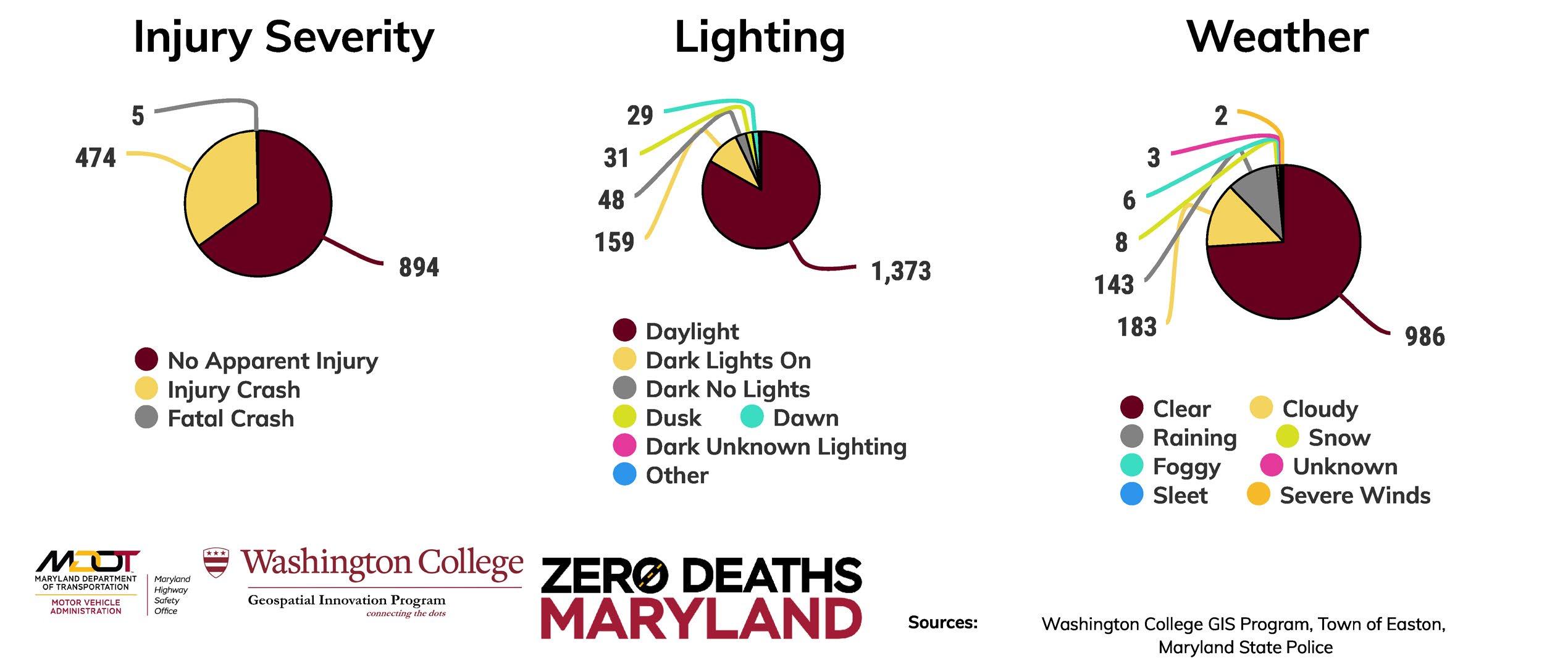
ACTION (D-1): Distracted driver enforcement training
REASON: Provide specialized training in the detection and apprehension of distracted drivers to all officers, with regular refresher training.
LEADS: EPD
DEADLINE: 2026 - Ongoing
ACTION (D-2): Police department to conduct high-visibility enforcement patrols, with complementary public information
REASON: Police department to employ specialized enforcement campaigns to address Distracted Driving. Enforcement must be complemented by highly visible public information campaigns warning not only of the enforcement actions, but the dangers of distracted driving.
LEADS: EPD, PI
DEADLINE: 2026 - Ongoing
ACTION (D-3): High visibility routine patrols
REASON: Police department to consult Easton Interactive Traffic Dashboard (EITD) to identify high crash locations involving distracted driving and incorporate them into routine patrol assignments. Increased visibility at those locations can increase the perception of risk of arrest.
LEADS: EPD
DEADLINE: 2026 - Ongoing
ACTION (D-4): High visibility overtime patrols
REASON: If funds become available for distracted driving enforcement, supplemental patrol coverage will be employed with overtime officers.
LEADS: EPD
DEADLINE: 2026 - Ongoing
ACTION (D-5): Covert enforcement
REASON: Unmarked patrol vehicles and plain clothes officers can be deployed to apprehend drivers who are more vigilant with marked vehicles present.
LEADS: EPD
DEADLINE: 2026 - Ongoing
ACTION: (D-6) Data analysis
REASON: Regularly review crash data on distracted driving crashes to assess effectiveness of current strategies and to identify potentially new strategies.
LEADS: EPD
DEADLINE: 2026 - Ongoing
ACTION (D-7): Public awareness campaigns
REASON: Create campaign to engage public awareness to educate drivers on the dangers of distracted drivers and consequences for being apprehended.
LEADS: EPD, PI
DEADLINE: 2026 - Ongoing
ACTION (D-8): Community involvement
REASON: Use Community Advisory Committee to assist in collaborating with organizations like schools, businesses and other community groups to increase awareness of this problem.
LEADS: EPD, PI, CA
DEADLINE: 2026
ACTION (D-9): Citizen reporting
REASON: Establish capability to enable citizens to report instances of distracted driving to create another dimension of community involvement.
LEADS: EPD
DEADLINE: 2026

Driving While Intoxicated (DWI) is the act of operating a motor vehicle with a blood alcohol concentration (BAC) above the legal limit. This limit varies by jurisdiction but is commonly set at 0.08%. DWI includes driving under the influence of drugs (DUID), which impair a driver’s ability to operate a vehicle safely.
Driving While Intoxicated (DWI) remains a significant public safety issue nationally. Effective enforcement strategies are crucial in reducing the incidence of DWI and enhancing road safety. This section quantifies the problem and explores various enforcement strategies, their implementation, and effectiveness in combating DWI.
DWI is a leading cause of road crashes, resulting in injuries, fatalities, and substantial economic costs.
According to the NHTSA, fatal drunk-driving crashes rose in 2020 for the first time in five years and rose again in 2021. There were 13,384 people killed in drunk-driving crashes in 2021 (about one person every 39 minutes), an increase of 14% over the previous year. About 31 percent of all fatal car crashes in 2021 involved drunk drivers.
Though the recent increase in drunk driving fatalities is discouraging, drunk driving has decreased significantly since the early 1980s. Around that time, public awareness campaigns began to shed light on the dangers of drinking and driving. Nearly half of all fatali-
ties in 1982 (48 percent) involved alcohol.
Easton has experienced a reduction in DWI crashes in five of the last 6 years, starting from 31 crashes in 2018 to 21 crashes in 2023. The only fatal crash was in 2018, with none since that year. This is great progress, but the fight is not over.
In this section we propose strategies that we believe will have a positive impact on the DWI situation in Easton. The number one goal of these DWI enforcement strategies is to increase the perception of risk of arrest to the driving public and therefore to reduce the occurrence of DWI violations and crashes.
Effective Law Enforcement Training: Targeted enforcement training in effective strategies leads to more effective use of resources.
Data Analysis and Predictive Policing: Using data analytics to identify patterns and predict high-risk areas and times for DWI occurrences.
Post Conviction Technology: Ignition Interlock Devices (I IDs) are breathalyzers installed in vehicles that prevent the engine from starting if the driver’s SAC is above a pre-set limit.
Public Awareness Campaigns: Public awareness campaigns educate the public about the dangers of DWI and the legal consequences of being caught.

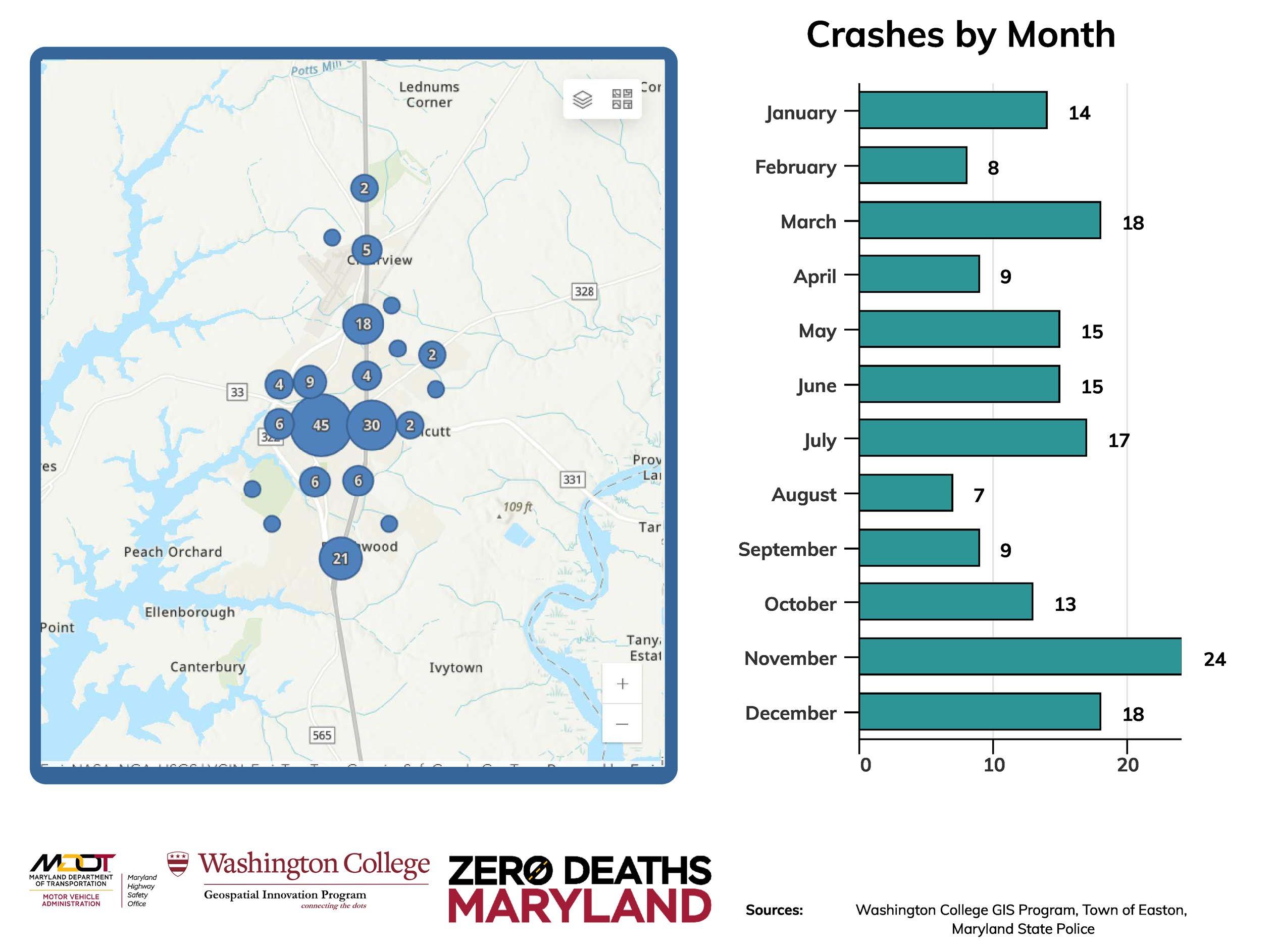
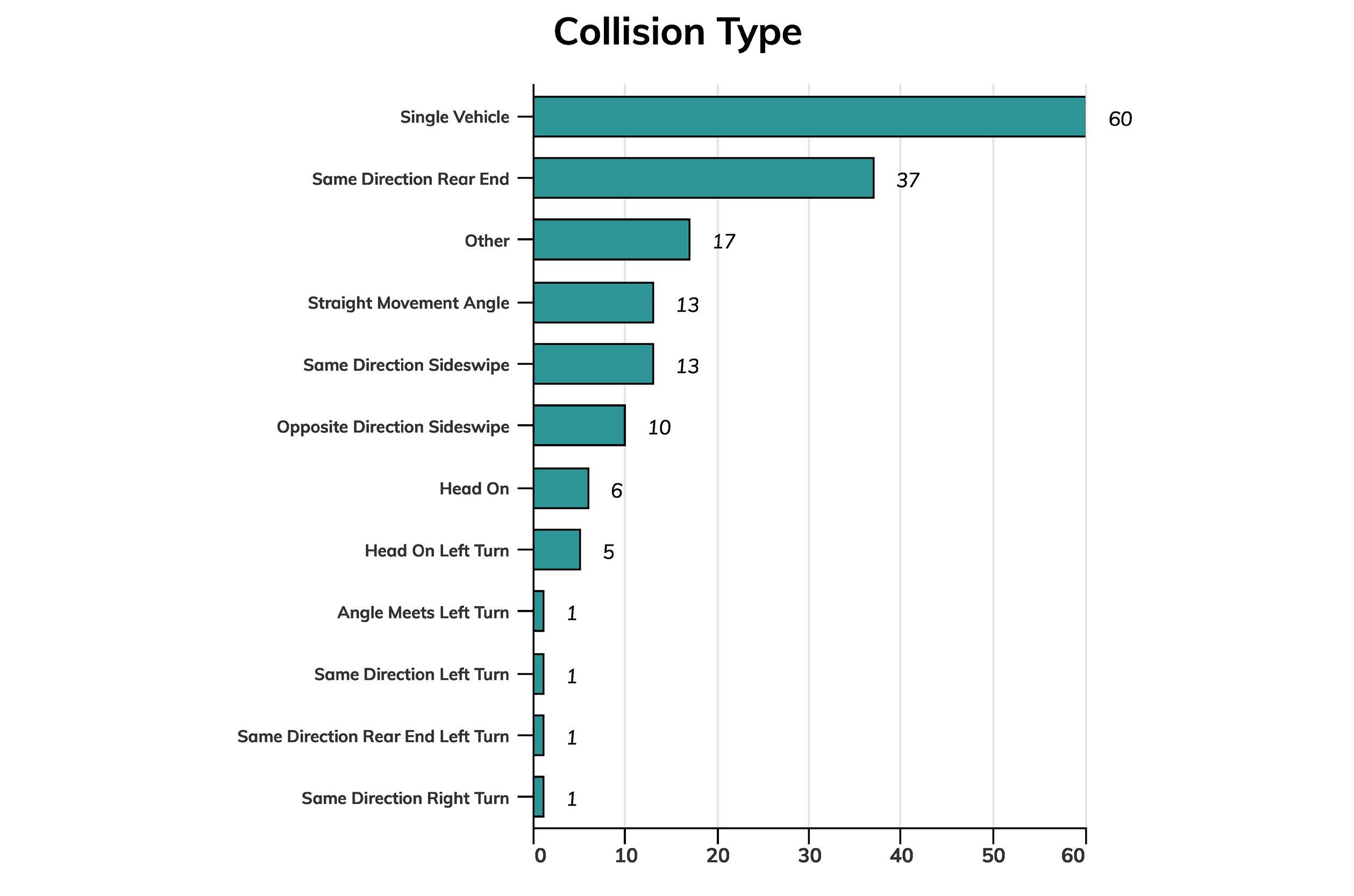
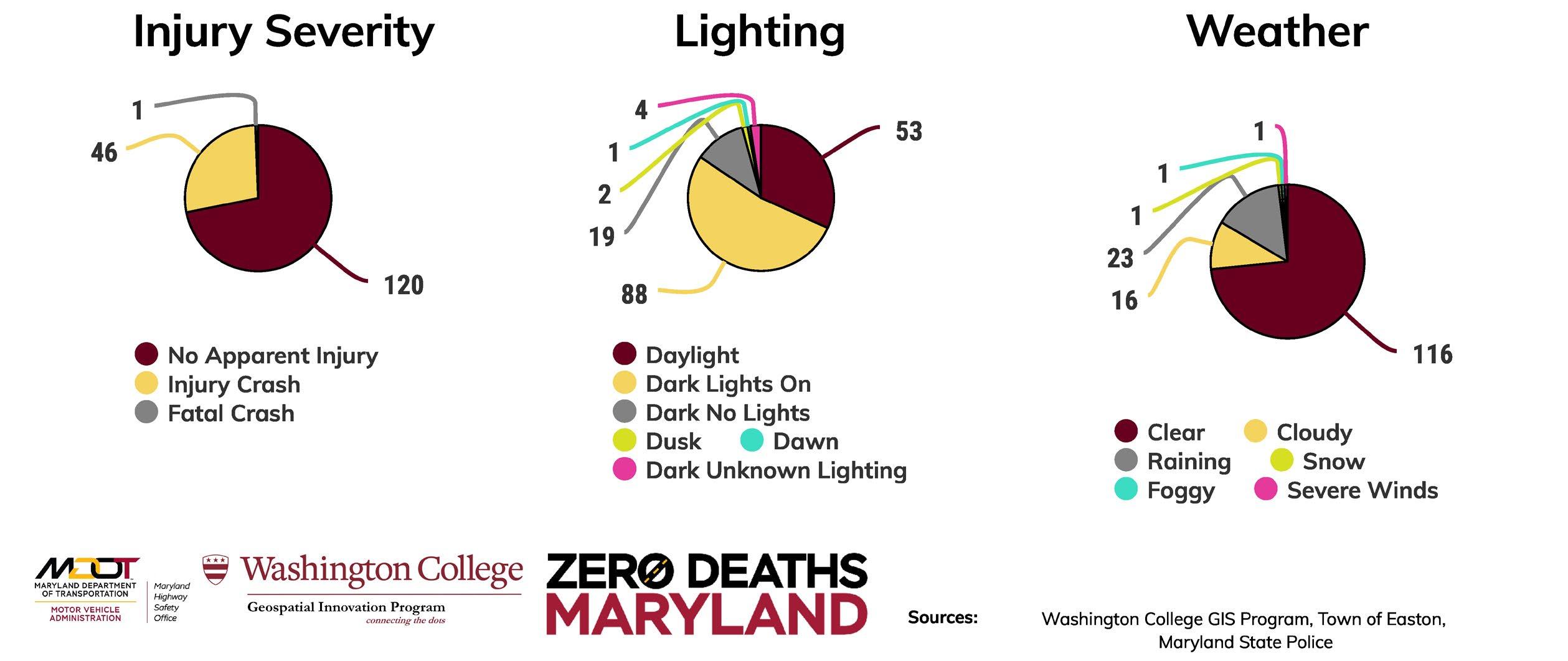

ACTION (I-1): Effective training - Basic DWI Enforcement
REASON: The Standardized Field Sobriety Testing course is a comprehensive program that has been proven effective in increasing officers’ ability to identify impairment in drivers at roadside. All patrol officers should successfully complete this training program.
LEADS: EPD
DEADLINE: Ongoing
ACTION (I-2): Effective trainingAdvanced DWI Enforcement
REASON: Advance Roadside Impaired Driving Enforcement (ARIDE) Program is a 6 hour course that is designed to enhance SFST Trained officers’ knowledge of the impairing effects of alcohol, other drugs, and poly-drug use, including alcohol LEADS: EPD
DEADLINE: Ongoing
ACTION (I-3): Data analysis and predictive policing
REASON: This calls for integrating data from various sources to enable informed patrol deployment. These targeted enforcement strategies lead to more effective use of resources.
LEADS: EPD
DEADLINE: 2025 - Ongoing
ACTION (I-4): Increased police patrols
REASON: Using EITD and other data sources to determine where and when high DWI activity occurs. These enhanced patrols have been consistently shown to be effective in increasing DWI arrests and raising the perception of risk of arrest.
LEADS: EPD
DEADLINE: 2025 - Ongoing
ACTION (I-5): Sobriety checkpoints
REASON: Checkpoints are set up at locations where officers may safely stop vehicles for signs of impairment. They primarily serve as a deterrent and not as a high volume DWI tool. Studies show that employment of checkpoints reduce alcohol related crashes by approximately 20%.
LEADS: EPD
DEADLINE: 2025 - Ongoing
ACTION (I-6): Public awareness campaigns
REASON: Public awareness campaigns educate the public about the dangers of DWI and the legal consequences of being caught. Increased awareness has been shown to lead to behavioral change and reduce DWI incidences.
LEADS: PI, EPD
DEADLINE: 2025 - Ongoing

Pedestrian and bicyclists are the most vulnerable road users. Unlike drivers or passengers in vehicles, pedestrians and bicyclists lack protective barriers, making them more susceptible to severe injuries or fatalities in the event of a collision. They are a critical component of urban planning and public health, positively impacting the quality of life in communities and the overall well-being of residents.
Pedestrian and bicycle fatalities comprise about 20% of total national fatalities in 2021, up from 15% in 2010. Thankfully, fatalities in Easton are a rare occurrence, with only one occurring in the past six years. While fatalities here are low, pedestrian and bicycle crashes still comprise approximately 8% of total injury crashes.
Bicycle safety is crucial for fostering a healthy, sustainable, and active society. The combination of effective engineering strategies and strict enforcement of safety regulations can drastically reduce the risk of accidents and fatalities. It is essential for governments, communities, and individuals to work together to prioritize the safety of cyclists. By doing so, we can ensure that cycling remains a viable and safe mode of transportation for everyone.
Cycling offers numerous health and environmental benefits, including reduced traffic congestion, lower greenhouse gas emissions, and improved physical health
for cyclists. However, the lack of adequate safety measures can result in severe injuries or fatalities.
Inadequate bicycle safety not only endangers cyclists but also imposes significant societal and economic costs. Medical expenses, loss of productivity, and the emotional toll on families and communities are substantial.
• Dedicated Bike Lanes and Paths create separate lanes for cyclists reduces the risk of accidents with motor vehicles.
• Ensuring smooth and well-maintained road surfaces can prevent accidents caused by potholes and uneven terrain.
• Designing cities with cyclists in mind, including the availability of secure bike parking and integration with public transportation.
• Utilizing technologies such as advanced warning systems for drivers.
Legislation and Regulation:
• Helmet Laws: Helmet usage significantly reduces the severity of head injuries.
• Rules for Motorist Interactions: Establishing clear rules for how motorists should interact with cyclists, such as maintaining safe passing distances.
Education and Awareness Campaigns:
• Public campaigns to educate both cyclists and motorists about safe practices and mutual respect on the road.
• Teach children to obey traffic rules and ride on the right side of the road.
Enforcement of Traffic Laws:
• Strict enforcement of speed limits and laws against drunk driving to protect cyclists.
• Enforcement of laws and regulations is important to ensure the safety of cyclists.
• Engaging local organizations in promoting bicycle safety and advocating for cyclist rights.
Equity and Accessibility: Safe pedestrian infrastructure ensures that all community members, including those who do not own a vehicle, have safe and equitable access to essential services, education, and employment opportunities.
Targeted Traffic Enforcement: Focused enforcement of traffic laws, particularly those that protect pedestrians, can significantly reduce dangerous behaviors such as speeding, running red lights, and failing to yield to pedestrians at crosswalks.
1. High-Visibility Enforcement: Increased police presence in areas with high pedestrian traffic can deter traffic violations. Officers can issue warnings or citations to drivers who endanger pedestrians.
2. Automated Enforcement: Implementing automated traffic enforcement technologies, such as red-light cameras and speed cameras, can consistently enforce traffic laws without the need for continuous police presence.
• Red-Light Cameras: These cameras capture images of vehicles that run red lights, a common cause of pedestrian accidents at intersections.
• Speed Cameras: Automated speed enforcement can reduce vehicle speeds, especially in pedestrian-heavy areas like school zones and residential neighborhoods.
3. Educational Campaigns: Raising awareness about pedestrian safety through public education campaigns can change driver behavior and enhance compliance with traffic laws.
• Community Outreach: Partnering with local organizations to disseminate informative materials.
• Information on pedestrian safety and the importance of yielding to pedestrians.
• School Programs: Educating children about safe walking practices and drivers about the importance of pedestrian safety through school-based initiatives.
1. Traffic Calming Measures: Some engineering solutions that reduce vehicle speeds and create a safer environment for pedestrians.
• Speed humps and bumps are physical barriers that force drivers to reduce speed, making streets safer for pedestrians.
• Chicanes and narrowed lanes are features that can slow down traffic by creating a more complex driving path, encouraging drivers to reduce their speed.
2. Improved Crosswalks: Enhancing crosswalk visibility and safety can protect pedestrians at intersections and mid-block crossings.
• High-visibility crosswalks utilize bright, reflective materials and eye-catching patterns such as zebra stripes to increase visibility.
• Pedestrian countdown signals provide pedestrians with information on how much time they have to cross the street and can reduce crashes.
3. Protected Pedestrian Paths: Designing dedicated pedestrian pathways that separate pedestrians from vehicle traffic can enhance safety.
• Ensure that all streets have well-maintained sidewalks and walkways that are wide enough to accommodate pedestrian traffic.
4. Traffic Signal Enhancements: Adjusting traffic signals to prioritize pedestrian safety.
• Leading Pedestrian Intervals (LPls) give pedestrians a head start at crosswalks before vehicles get a green light can reduce conflicts.
• Implement an all-red phase at traffic signals where all vehicle movements are stopped, allowing pedestrians to cross safely.


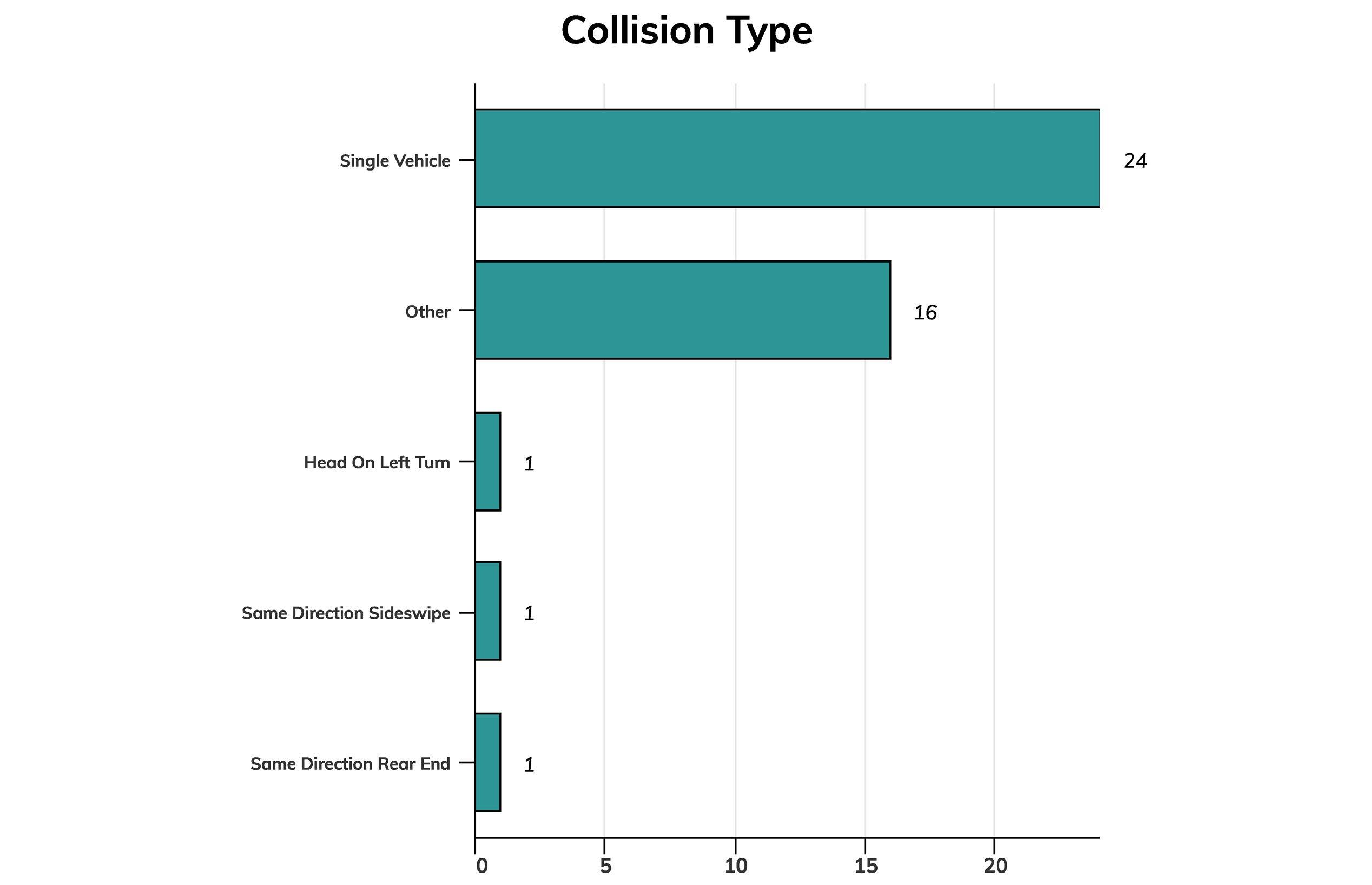
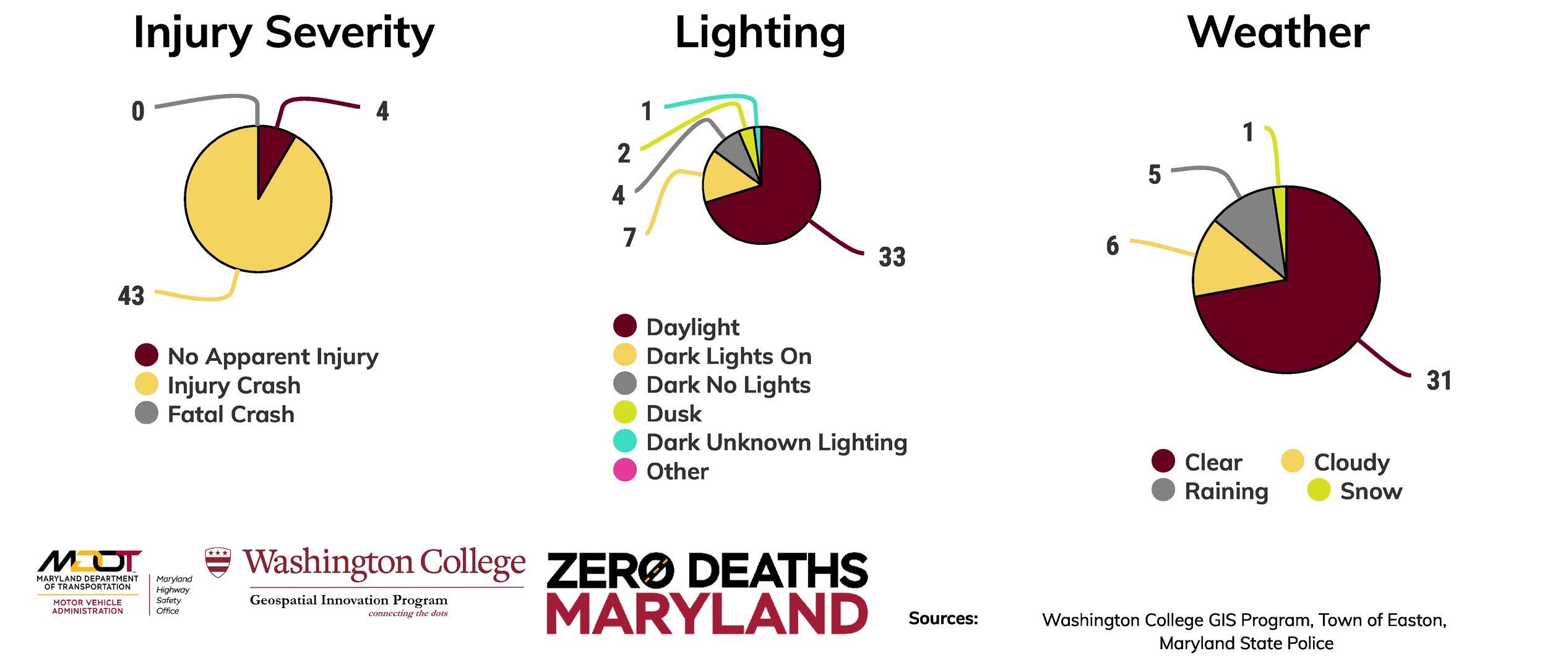




ACTION (P-1): Create sidewalk signage campaign
REASON: A number of jurisdictions have implemented campaigns to embed signage in sidewalk at problem intersection to draw the attention of distracted pedestrians. This could prove effective at high crash locations.
LEADS: ENG
DEADLINE: 2026 - Ongoing
ACTION (P-2): Rectangular rapid flashing beacons
REASON: To enhance pedestrian conspicuity and increase driver awareness at uncontrolled, marked crosswalks, transportation agencies can install a pedestrian actuated Rectangular Rapid Flashing Beacon (RRFB) to accompany a pedestrian warning sign. RRFBs flash with an alternating high frequency when activated to enhance conspicuity of pedestrians at the crossing to drivers.
LEADS: ENG
DEADLINE: 2026 - Ongoing
ACTION (P-3): Install “leading pedestrian intervals”
REASON: A leading pedestrian interval (LPI) gives pedestrians the opportunity to enter the crosswalk at an intersection 3-7 seconds before vehicles are given a green indication. Pedestrians can better establish their presence in the crosswalk before vehicles have priority to turn right or left.
LEADS: ENG
DEADLINE: 2026 - Ongoing
ACTION (P-4): Install pedestrian signals
REASON: Install pedestrian crossing signals at all new and existing traffic signals within Town limits. These signals have been proven to significantly reduce crash risk at busy and/or large intersections.
LEADS: ENG
DEADLINE: 2026 - Ongoing
ACTION (P-5): Increase number of ADA compliant ramps
REASON: Continue to install ADA compliant ramps at intersections, increase sidewalk width
to accommodate walkability for all citizens.
LEADS: ENG
DEADLINE: 2026 -Ongoing
ACTION (P-6): Stripe pedestrian crossings
REASON: Conduct survey of intersections with need of pedestrian crossing paint and signage. Install according to safety priority.
LEADS: ENG
DEADLINE: 2026 - Ongoing
ACTION (P-7): Add additional notification at select Rails to Trails crossings
REASON: Rail to Trails crossings at high traffic intersection should be evaluated for additional signalization, signage and crossing painting.
LEADS: ENG
DEADLINE: 2027
ACTION (P-8): Sidewalk expansion campaign
REASON: The Town has been slowly increasing the number and connectivity of sidewalks.
LEADS: ENG
DEADLINE: 2027
ACTION (P-9): Washington St. improvement
REASON: Washington St. S from the Parkway to Marlboro is wide and has the potential to be friendly to both vehicle traffic and vulnerable users. This section of roadway should be examined to determine if bike lanes, sidewalk and other traffic calming techniques can be applied to it as part of the creation of a bicycle friendly town, discussed in Bicycle section.
LEADS: ENG
DEADLINE: 2028
ACTION (B-1): Create a bicycle friendly town
REASON: Easton wants to be bicycle friendly Town that enhances bicycle travel to, from and around the Town of Easton. However, most town streets are far too narrow to accommodate parking, sidewalks and bike lanes. This strategy will look to create a network of bike friendly streets running north to south and east to west, all connecting downtown with the Rails to Trails network. All bike friendly streets will be clearly marked to ensure that all share the road.
LEADS: ENG, PD, PZ, CG
DEADLINE: Ongoing
ACTION (B-2): Complete Rails to Trails network
REASON: The next link of the rails to trails network is the crossing at the Parkway and Glenwood Ave. The Town has been waiting for several years for the installation of a traffic light at that location. That traffic signal will allow the section between Port St and Glenwood to be connected, which will create a continuous path from St. Michaels Rd. to the north-south bike path at Aurora St.
LEADS: ENG
DEADLINE: 2027
ACTION (B-3): Connect East side of Easton to the West side by creating crossings at Route 50
REASON: A traffic signal will be installed at Norris Taylor Dr. and Route 50. Norris Taylor Dr. can be either connected to the adjoining neighborhood to the Rails to Trails or through John Ford Park. This would provide connection by bicycle to a large portion of Easton living on east side of Route 50.
LEADS: ENG
DEADLINE: 2027
ACTION (B-4): Connect Southeast side of Easton to the west by improving crossing at Route 50 and Dutchmans Ln.
REASON: The current crossing for bikes going west on Dutchmans Lane crossing Route 50 is totally inadequate and provides little safety area for bicyclists crossing Route 50. Even though there are plans being examined to build a bicycle overpass across Route 50,
it is many years from happening. This is an easy, low cost improvement. At present only very experienced bicyclists attempt to cross under current conditions.
LEADS: SHA, ENG
DEADLINE: 2027
ACTION (B-5): Integrate bicycle safety information and instruction into county schools
REASON: A community partner received a MHSO grant to provide bicycle safety education at Talbot County Schools. Programs and events such as bicycle rodeos will be an integral part of this instruction.
LEADS: CP, TC
DEADLINE: 2026
ACTION (B-6): Distribute bicycle safety educational materials at public events
REASON: Work with Community Advisory Committee and Talbot Thrive to identify programs and events where materials can be meaningfully distributed. Work with local media to distribute materials.
LEADS: CP
DEADLINE: 2025 - Ongoing
ACTION (B-7): Provide parking for bicycles
REASON: Identify locations throughout town where safe and lockable parking spaces can be situated to accommodate bicyclists and their expensive bicycles. This will be part of the bicycle friendly program and will help attract bicyclists to downtown.
LEADS: ENG
DEADLINE: 2026
ACTION (B-8): Mark all bicycle friendly streets with shared lane markings
REASON: Mark roads in the bicycle friendly network with high visibility “Share the Road” lane markings. Visible signage must accompany and complement the shared road markings.
LEADS: ENG, CP
DEADLINE: 2026

Talbot County has the highest percentage of citizens aged 65 and older in the State of Maryland. As the population ages, the number of mature drivers on the road increases, raising unique challenges and safety concerns. To ensure the safety of mature drivers and other road users, it is crucial to implement effective strategies. This narrative explores various approaches, their implementation, and effectiveness in addressing mature driver problems.
Mature drivers, typically defined as those aged 65 and older, face unique challenges due to age-related declines in physical and cognitive abilities. Addressing these issues is crucial to maintaining their mobility and safety on the road. Common challenges include physical decline, such as reduced reaction time and mobility issues; sensory impairments, like declines in vision and hearing; and cognitive decline, affecting memory, attention, and decision making.
During the years 2018 through 2023 Mature Drivers were involved in 25% of all traffic crashes, 37% of injury crashes and 10% of fatal crashes. The vast majority of these crashes involved straight movement angle crashes or same direction rear end collisions.
Effective strategies for addressing mature driver problems require a comprehensive approach that includes health assessments, driver education, vehicle and roadway design modifications, supportive policies, and community involvement. Future efforts should focus on integrating emerging technologies, enhancing community partner-
ships, and continuously evaluating and refining strategies to adapt to the changing needs of an aging population. Most of the countermeasures are the responsibility of the Motor Vehicle Administration. Some of these are:
• Scheduling routine health examinations can help identify issues that may impair driving ability. Mandatory screenings during license renewals for drivers over a certain age ensure that drivers meet the necessary sensory standards.
• Cognitive tests are also essential. By incorporating cognitive screening into routine health check-ups, healthcare providers can determine a driver’s cognitive fitness and identify the need for further evaluation or intervention.
• Driver Education and Training Education and training are key components in addressing mature driver issues. Refresher courses can update mature drivers on current road rules and safe driving practices.
The Community Advisory Group will be asked to review this crash group and make suggestions on strategies to improve the crash experience of this age group.
In summary, ensuring the safety of mature drivers and other road users necessitates a multifaceted approach. By combining health assessments, education, vehicle and roadway modifications, supportive policies, and community involvement, we can create a safer and more supportive environment for mature drivers. This holistic approach not only addresses the unique challenges faced by mature drivers but also enhances overall road safety for everyone.




ACTION (M-1): Roadway modifications to improve mature driver safety
REASON: Implementing clear signage, better lighting, and dedicated turning lanes reduces confusion and improves navigation for older drivers.
LEADS: ENG
DEADLINE: 2027 - Ongoing
ACTION (M-2): Pursue partnerships with organizations that can provide alternative transportation
REASON: Work with community, church and transit organizations to promote and make available higher use of alternative transportation
LEADS: MA, DCT
DEADLINE: 2028
Unlike the other seven safety topics which all depict driving actions and crashes, our final focus point is on Easton’s largest and busiest traffic point, U.S Route 50. Route 50 is a major country-spanning highway that runs right through the center of the Town of Easton.
Route 50 is the main thoroughfare for traffic and commerce destined for the southern end of the Eastern Shore. It is also the sole commuter road for people who commute to the Western Shore. In the summer, it serves as the main route for traffic headed to the coastal beaches of Maryland and Delaware.
It is heavily congested during working hours and rush hours. It is severely congested on warm weather weekends with beach traffic added to local traffic.
Crashes on Route 50 constitute a major part of the Town’s toal crash data. From 2018 through 2023, 24% of crashes occured on Route 50, including 32% of the injury crashes and 50% of fatal crashes. Many of these crashes occur at intersections that are addressed in the “Overall” section.
High-volume, high-speed roadways, with dangerous intersections present several significant problems that can compromise safety and efficiency. Some of the
main issues include an increased accident risk. Higher speeds reduce reaction time and increase the severity of crashes. Increased traffic volume increases the likelihood of crashes.
Poorly designed intersections create conflict points where crashes are more likely. Poorly designed intersections become bottlenecks causing severe backups and delays. These backups can extend several miles and often take many hours to subside. When there are no alternative routes to divert traffic, additional traffic disruptions occur.
Traffic disruptions also cause additional hardships. Congested thoroughfares that impede emergency vehicles from getting to the scene or transporting victims to the hospital can compound already dangerous situations.
By addressing these issues through thoughtful planning, design, and management, the safety and efficiency of high-volume, high-speed roadways with dangerous intersections can be significantly improved.
The following strategies aim to improve traffic behavior and patterns, and if implemented will help us achieve our VISION ZERO goals.

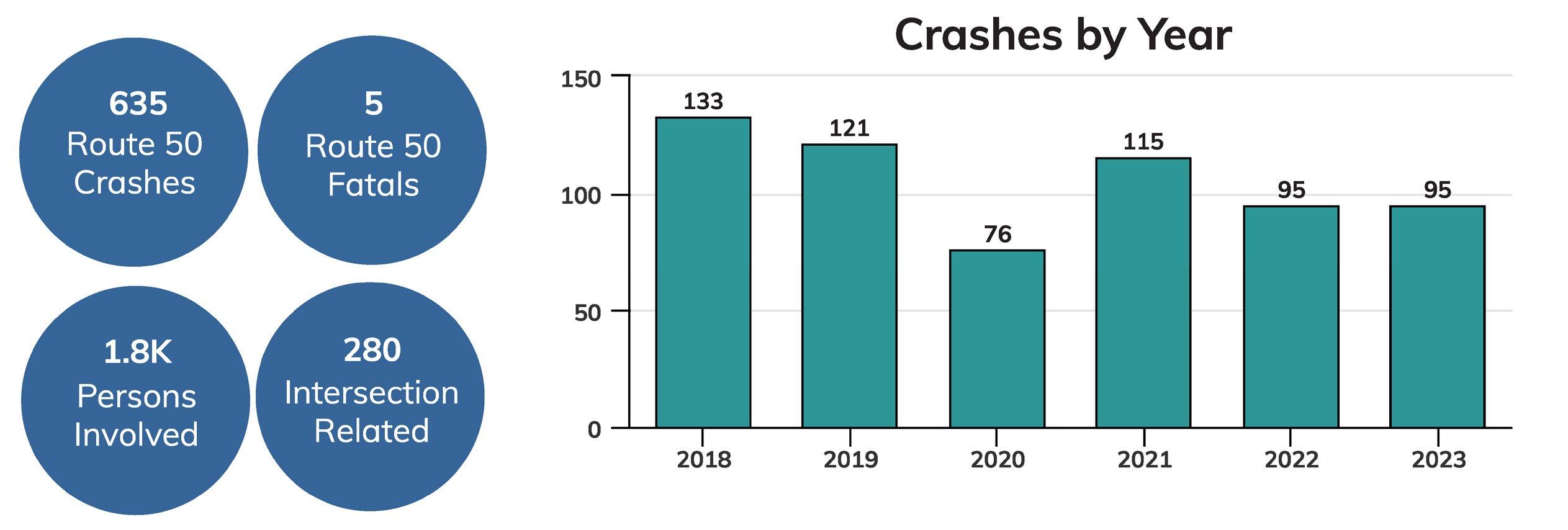



ACTION (R-1): Crash data analysis
REASON: Use Easton Interactive Traffic
Dashboard (EITD) to analyze trends, high risk area and times for targeted enforcement.
LEADS: SHA, EPD, ENG
DEADLINE: Ongoing
ACTION (R-2): Create dedicated enforcement zones
REASON: Create designated areas for traffic stops and enforcement activities that do not impede flow of traffic.
LEADS: SHA, EPD, ENG, DEADLINE: Ongoing
ACTION (R-3): Use of red light cameras
REASON: Install red light cameras at intersections to deter and penalize red-light running. Needs legislation.
LEADS: SHA, EPD, TA
DEADLINE: 2027
ACTION (R-4): Speed cameras
REASON: Use speed cameras to enforce speed limit in high-risk areas. Needs legislation.
LEADS: SHA, EPD
DEADLINE: Contingent on Legislation
ACTION (R-5): Intelligent Transportation Systems (ITS)
REASON: Implement ITS to monitor traffic conditions in real time. Manage traffic flow, and provide timely information to drivers through variable message signs.
LEADS: SHA, ENG
DEADLINE: 2028
ACTION (R-6): Increased patrols
REASON: Increase the presence of law enforcement officers during peak traffic times, and in areas with high crash rates.
LEADS: SHA, EPD
DEADLINE: 2027
ACTION (R-7): Targeted enforcement
REASON: Conduct targeted enforcement campaigns focusing on common violations such as speeding, distracted driving, and running red lights.
LEADS: EPD
DEADLINE: 2026
ACTION (R-8): Quick clearance programs
REASON: Develop procedures for the rapid clearance of crashes and other incidents to minimize disruptions and maintain traffic flow. Provide services to quickly assist disabled vehicles and remove them from high-speed lanes.
LEADS: EPD
DEADLINE: 2026
ACTION (R-9): Use of unmarked patrol vehicles
REASON: Utilize unmarked patrol vehicles to detect and deter aggressive driving and speeding.
LEADS: EPD
DEADLINE: 2026
ACTION (R-10): Address five intersections requiring immediate attention
REASON: The five intersections with the highest crash rates should be addressed as quickly as possible, helping to reduce crashes and fatalities along Route 50.
LEADS: SHA, ENG
DEADLINE: 2027
ACTION (R-11): Context speed management
REASON: Examine the “Safe System Approach” which involves making a holistic and comprehensive effort to prioritize multimodal safety. One such strategy is setting speed limits based on multimodal and land use context rather than the 85th percentile of current motorist speeds. It involves taking a Safe System Approach to speed limit setting through strategies that pair speed limit changes with complementary countermeasures.
LEADS: SHA, ENG, EPD
DEADLINE: 2028
ACTION (R-12): Intersection design
REASON: Examine the Safe System approach which involves making a holistic and comprehensive effort to prioritize multimodal safety. One such strategy is setting speed limits based on multi modal and land use context rather than the 85th percentile of current motorist speeds. It involves taking a Safe System Approach to speed limit setting through strategies that paired speed limit changes with complementary countermeasures.
LEADS: ENG, EPD, SHA DEADLINE: 2028
ACTION (R-13): Roadway design
REASON: Design or improve roadways to include appropriate signage, road markings, and speed reduction measures. Implementing median barriers, rumble strips, and proper lighting can also improve safety
LEADS: ENG, SHA DEADLINE: 2028
ACTION (R-14): Traffic signal optimization REASON: Optimize traffic signal timings to minimize stop-and-go traffic and reduce the likelihood of collisions.
LEADS: ENG, SHA DEADLINE: 2028















